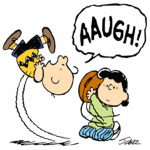 I’m out on a Saturday night, after having a long conversation with author John Austin, whose non-fiction short, “Planet Zero,” is now available in the critically acclaimed anthology Salaam Love: American Muslim Men on Love, Sex, and Intimacy.
I’m out on a Saturday night, after having a long conversation with author John Austin, whose non-fiction short, “Planet Zero,” is now available in the critically acclaimed anthology Salaam Love: American Muslim Men on Love, Sex, and Intimacy.
The rest of the evening will be spent typing up some posts, which I will schedule for publication throughout the coming week.
Some thoughts that are buzzing through my head:
♣ The classic Jim Collins book, Good to Great: Why Some Companies Make the Leap…and Others Don’t, specifically the assumptions in the “Hedgehog Concept” diagram. Do all three sets necessarily overlap? What can you do when they don’t?
♣ The second book of James S. A. Corey’s The Expanse space opera series, Caliban’s War, which I am currently reading while my brother finishes the first book, Leviathan Wakes. I’m enjoying the story, but my head-buzz is about why. The problem is a combination of the Dan Brown quandary, because the writing is often clumsy on a sentence-by-sentence level (I resist taking an editor’s pen to it!), and the Avatar Anachronism, which is when human beings in a far future setting act pretty much the same way they do today. I hesitate to call these “flaws” because the series is engaging. Food for thought.
♣ A general confluence of the ideas of recurring themes in literature and recurring themes in life. Which imitates which?
♣ The personality typology implied by the popular quote (often misattributed to Eleanor Roosevelt) “Great minds discuss ideas, average minds discuss events, and small minds discuss people.” Specifically, if these are indeed different innate intellectual types, how does this affect communication between them? Can a “people person” understand ideas the same way an “idea person” can understand human beings? What implications does this have for politics, business, art, and civilization as a whole?
♣ That we really need a concise term for what I think of as perpendicular selection: when quality X is what a process should select for, but Y is what it actually selects for. Therein, X stands in for some relevant value (like talent) while Y stands in for a non-related selectable resource, like money or fame or aggression. Perpendicular selection (see how clumsy?) is often defended by the argument that “X and Y aren’t mutually exclusive.” A better question is, “How thoroughly do X and Y overlap?” because that figure reveals how inefficient or, in economic terms, “perverse” this selection process is.
Enjoy the week of prescheduled posts, and I’ll see you after the Presidents Day weekend.
